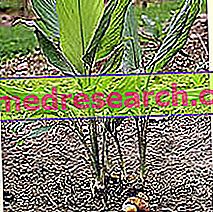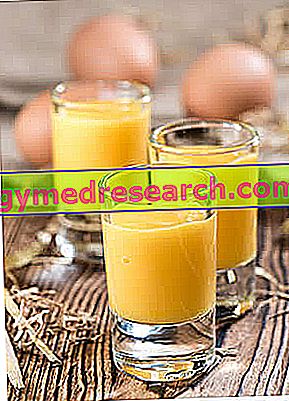
Scientific name
Curcuma longa L.Family
ZinziberaceaeOrigin
IndiaUsed Parts
Drug given by rhizomesChemical constituents
- Essential oil (camphor, cineol, turmerone);
- Starch;
- Flavonoids;
- fibers;
- Dyes belonging to the curcumin group (curcuminoids).
Turmeric in Herbal Medicine: Properties of Curcuma
Turmeric extracts have anti-inflammatory, antioxidant and immunostimulatory activity. The mechanisms of action responsible for these properties have been ascertained and include the inhibition of cyclooxygenases and lipoxygenases.
The common indications for the use of turmeric extracts are represented by functional dyspepsia, gallbladder stones, biliary dyspepsia, chronic hepatopathies, inflammatory and chronic degenerative diseases.
Turmeric extracts are used by the industry as excellent natural dyes.
Biological activity
Turmeric is a plant endowed with numerous properties, which are conferred by the essential oil and curcuminoid polyphenols (in particular, by curcumin) contained in it.
These active substances have eupeptic, cholagogue and choleretic activities and it is thanks to these properties that the use of turmeric has been officially approved for the treatment of gastrointestinal disorders associated with dyspepsia.
The essential oil and curcumin, however, also possess additional and interesting properties, such as:
- Anti-inflammatory properties given by the ability of these active substances to inhibit cyclooxygenase and lipoxygenase enzymes. In this way, in fact, there is a reduction in the synthesis of chemical mediators responsible for inflammatory processes (ie, there is a reduced synthesis of prostaglandins and prostacyclins);
- Antioxidant and hepatoprotective properties, thanks to the ability of these substances to reduce the production of peroxides and the accumulation of cholesterol in the liver.
Furthermore, numerous studies have been carried out - and are still being carried out - on the potential antitumor properties of curcumin. Curcumin, in fact, appears to be able to exert an antineoplastic action by inhibiting the expression of particular proto-oncogenic genes and by inhibiting the activity of particular protein kinases implicated in the development and growth of tumors.
Turmeric against dyspepsia
As mentioned - thanks to the eupeptic, cholagogue and choleretic properties ascribed to the essential oil and curcumin contained in it - turmeric is used in phytotherapy to combat dyspepsia and the symptoms associated with it and to promote hepatobiliary function.
Turmeric can be found in various herbal preparations.
When using the powdered turmeric rhizome (generally enclosed in capsules or capsules) we recommend the use of 1.5-3 g of product per day, to be divided into two or three divided doses to be taken after meals.
For more detailed information on the dosage of turmeric to be taken to combat dyspeptic disorders, see the article on "Curing with Curcuma".
Turmeric in folk medicine and homeopathy
In folk medicine, turmeric is used as a remedy for the most diverse disorders. In fact, this plant is used internally - as well as to treat gastric and hepatic disorders - also as a remedy for diarrhea, colic, infections and inflammation of the respiratory tract, infections and inflammation of the urinary tract and kidneys and headache. In the past, turmeric has even been used as a remedy for leprosy.
Externally, however, turmeric is used in folk medicine in the treatment of infected wounds, bruises, skin inflammation, inflammation of the oral mucosa and even against eye infections.
In homeopathy, turmeric is used as a remedy against dyslipidemia, against inflammation and against joint pain and to aid digestion.
Side effects
Normally, if used at the recommended dosages, turmeric should not cause any side effects of any kind.
In the event of prolonged use or in the event of an overdose, however, some undesirable effects may occur, such as stomach pain and other gastrointestinal disorders and hyperchlorhydria.
Contraindications
Avoid the use of turmeric in case of hypersensitivity to one or more components, in individuals suffering from severe liver diseases and / or with bile duct obstruction.
Furthermore, the use of turmeric is also contraindicated in pregnancy and during breastfeeding.
Pharmacological Interactions
Turmeric may interfere with the activity of:
- Antiplatelet agents and anticoagulants (there is an increased risk of developing bleeding).
- Cyclosporine .
- Digoxin.
Warnings
High doses can increase the problems due to the presence of peptic ulcer (hyperchlorhydria) or gallbladder stones.
Note
To the same family of turmeric belongs also the Zedoaria ( Curcuma zedoaria Roscoe ), whose rhizome - present in the negative list of the German Commission - was traditionally indicated as a digestive remedy, also endowed with antispasmodic properties. Today it is used only as a flavoring in the liquor industry, while in medicine it has been definitively replaced by the rhizome of Curcuma longa .



